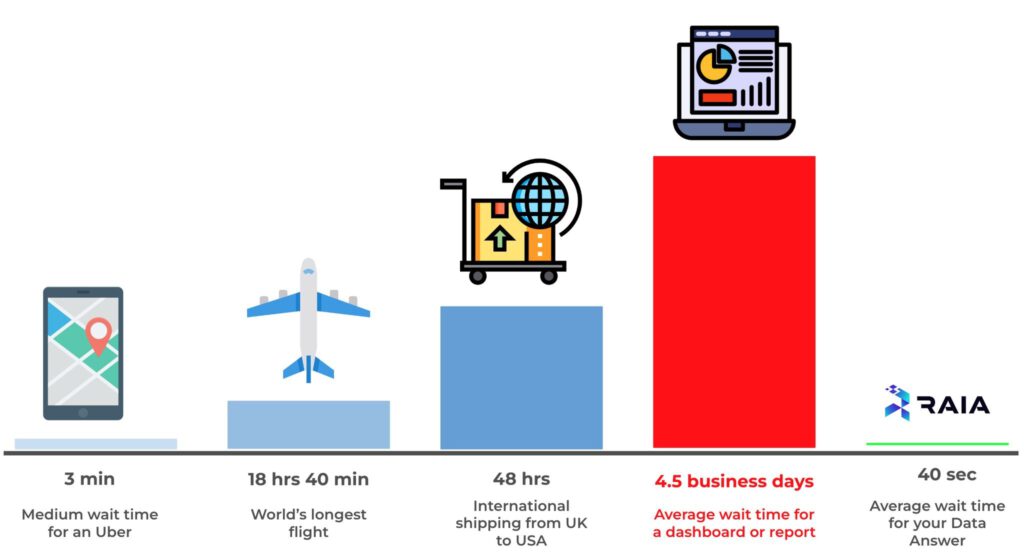What’s the difference between these two statements?
In the first instance, you’ve delivered interesting data. It might be a beautiful dashboard, but it doesn’t prompt or take any action. Its impact probably starts and ends in that meeting.
The second instance is a perfect example of what actionable data is.
For over 20 years, dashboards have been a foundational element of business intelligence, helping data teams visualize and share valuable data across their organization. At inception, dashboards were perfect for delivering key reports, but much has changed over the last two decades, including the appetite and needs of your business users.
Despite this objective, many users who come to Raia report that the reality is completely different. Users report that the lack of technical skills and resources needed to effectively use data to inform their decisions has a significant impact.
As a result, over two-thirds (69%) of business leaders say a lack of data skills stops employees from using data effectively in decision-making. The result? Data ends up being misused — or not at all.
- Three-quarters (74%) of employees report feeling overwhelmed or unhappy when working with data, impacting their overall performance.
- 36% of surveyed employees state they will find an alternative method to complete a task without data.
Real-time insights are hard to obtain due to outdated or broken dashboards and distributed data
VP of Product at Calendar Management Company






